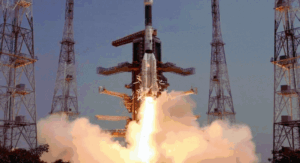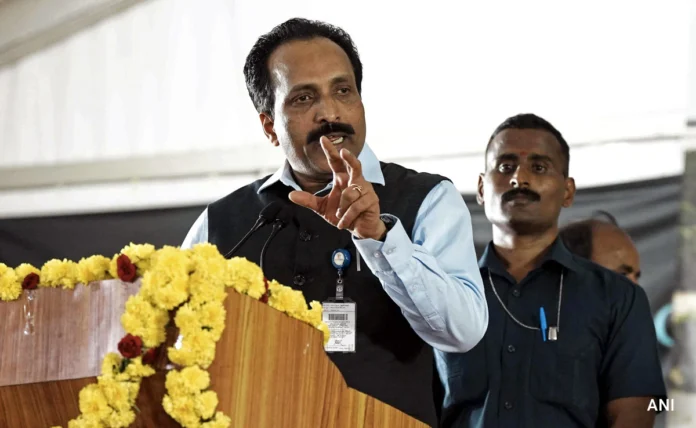Chandrayaan-3: The Chief of the Indian Space Research Organisation (ISRO), S Somanath, made a ground-breaking announcement in the area of space exploration.
During a recent press conference, the renowned ISRO Chief revealed that the US has expressed a strong desire to collaborate with India on space technology efforts, particularly in the aftermath of the Chandrayaan-3 mission.
This discovery represents a watershed moment in international space collaboration, emphasizing India’s growing prominence as a global space exploration leader.

The scenario: Chandrayaan-3 and the Indian Space Odyssey
Before diving into the specifics of the collaboration, it’s important to understand the context of India’s space research efforts. ISRO’s highly anticipated moon mission, Chandrayaan-3, has caught the excitement of scientists, space enthusiasts, and the worldwide community.
Building on the success of its predecessors, Chandrayaan-1 and Chandrayaan-2, this mission will use new technology and scientific instruments to uncover further secrets about the moon.
The news that the US is interested in India’s space technology competence has created enormous interest and intrigue within the scientific community and beyond.
The conversations with US counterparts, according to S Somanath, centered on potential cooperation in many elements of space technology, including satellite technology, deep space exploration, and cutting-edge research and development activities.
India’s Changing Scenario
Times have changed, and India is capable of producing the best technology and rockets, according to Prime Minister Narendra Modi, who has opened the space sector to private actors.
“Our country is extremely powerful. “The country’s knowledge and intelligence level is among the highest in the world,” claimed the ISRO chief.
“In Chandrayaan-3, when we designed and developed the spacecraft, we invited experts from the Jet Propulsion Laboratory, NASA-JPL, who does all the rockets and most difficult mission.”
Six NASA-JPL employees arrived, and we explained Chandrayaan-3 to them. This occurred prior to the soft landing. We explained how we developed it, how our engineers built it, and how we plan to land on the Moon’s surface, and they simply replied, “No comments.” ‘Everything will be fine.'”
“‘Look at the scientific instruments, they’re quite cheap,’ said the US space scientists. They are simple to construct and advanced in technology. How did you construct it? ‘Why don’t you sell this to America?’ he suggested.

US Requests India to Share Space Tech
While the details of the relationship have yet to be finalized, several major areas for possible joint ventures have been identified:
Collaboration in satellite design, development, and deployment can improve both nations’ communication networks, weather forecasting, and Earth observation capacities.
Exploring the immensity of outer space is a common goal among scientists all around the world. Joint deep space missions, including journeys to Mars and beyond, are possible.
Collaboration in scientific research, especially space-based experiments and investigations, can greatly add to humanity’s understanding of the cosmos and its diverse phenomena.
The combination of India’s experience in spacecraft development and American advances in propulsion systems and mission planning can result in the production of highly advanced and efficient spacecraft.
Both countries can work together to develop policy frameworks, governance models, and international space legislation, so creating a favorable atmosphere for global space exploration endeavors.
The Advantages of Collaboration
Shared Expertise:
By pooling their scientific and technological resources, India and the United States can tackle complicated problems and find novel solutions.
Cost Optimisation:
By sharing the financial burden of space missions and programs, both governments can save money, enabling more ambitious and thorough explorations.
Global Impact:
The outcomes of the collaboration could have a significant impact on global space exploration, encouraging other nations and boosting international cooperation.
Scientific Discoveries:
Collaborative missions can help to make ground-breaking scientific discoveries that will help humanity better understand space and the universe.

Conclusion
The discovery that the US is interested in partnering with India on space technology endeavors post-Chandrayaan-3 heralds the start of a new era in space research. The collaboration of these two space giants has the prospect of revolutionary discoveries, technical advancements, and inspiring accomplishments that will be felt around the world.
The world is watching with bated breath as India and the United States embark on this collaborative voyage, awaiting the astounding feats and scientific wonders that will definitely emerge from this cooperation.
They are not only exploring the universe; they are forging a future in which the bounds of space are stretched beyond imagination, providing humanity with a glimpse into the endless possibilities that lay beyond our planet.
“This collaboration exemplifies the global scientific community’s spirit of unity and shared ambition.” We shall explore the unknown, solve riddles, and inspire future generations together. The stars are within our grasp, and we will touch them together.”
Related Article: ISRO’s Gaganyaan Space Mission 2023: Epic Key Test Set for October
